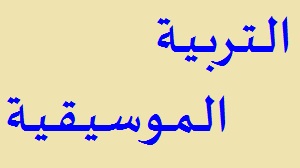Social cognitive approach to learning through the form
To achieve the educational goal according to this approach, the traffic the following phases:
A View. Models of behavior on the students: in the presentation of his theories of social learning, says Saleh Mohammed Ali Abu Gado: "A lot of learning happens by observing the behavior of others and observe the results of their actions, and according to this theory, we do not learn acts only simple, but we learn models of the Faculty of behavior, that is what we learn not only the models of behavior, but rules that are the basis of behavior "(16). Based on this argument, we can conclude that the learner yen tend to The adoption of behaviors some people who regard them as models Pandora and Margaret Gradler Bandura) And ( 1992 M .Gredler Hence, teachers must create models of behavior to teach and present to students, If the goal of a lesson is to teach responsibility, it would be useful to interpret, but add to the explanations provided on this topic, you must bring someone to the section of society considers responsible doctor (for example), and exciting interactions with the students to influence them. And if he wanted a teacher to teach students how to record information, Instead of standing at the borders to give recommendations about the process that must be followed to achieve this, it can be carried out in front of them what is required for the acquisition of how to record the information, and provides the teacher in front of them living examples of that and attached to his work that provide suspension and clear about the processes being implemented, it is this way Become a model that could be imitated. This is clear from the approach that will increase the educational goal established in the hearts of students, if they were given real life examples they can contact them. Providing realistic models of behavior, J helped to achieve the goals that will not just be recipes ask learners to absorb it.
B. Evaluate and justify the value of behaviors: "Sees Pandora That people develop their assumptions about the types of behavior that will lead them towards the desired educational goal "(17). In the sense that achieving the goal depends on the value that we give the result. Should, therefore, to show the learners the benefit of each learning objective Understand - according to this approach, learn better If you have identified the usefulness of this educational goal or the other for life, or if you show them what Segnouna of particular interest to learn for learning later. Here is unclear The bulk of my face, pragmatic approach to learning in the Pandora.What matters is the value of the results expected by the learners of the objectives to be achieved, P and clarity of objectives depends - according to this model - over the interest of clarity and to achieve.
C. Promoting behaviors the student: "It is very important to feed the feedback positive for each student is making progress in learning, because they allow him to configure a positive image of the same, and recognized KMAT able to do the tasks required, but it is possible to resort to punishment to reduce to do certain behaviors"(18). Here we find Pandora Gradler with his basic concepts are used in a pedagogy of targets and in the theory of programmed instruction set, which was founded by Skinner (Skinner) ; Nutrition is positive or negative feedback helps both to change the behavior specified in the educational goal or strengthened.
D. Practice, "recommends Pandora combination of theory and application, because the combination between them incredibly much to learn self-j - motor private. Actually it is very difficult to learn the game of golf without practice, it is also difficult to n learn to write without the exercise, base-which write a good line to know that they have reached through the practice and then practice and practice ... "(19). To clarify the relationship of theory and practice in the field of education, we offer the following educational strategy proposed by Gredler)(1992. To achieve educational goals. This strategy consists of a set of stages are:
Phase I / Analysis of behaviors to be achieved:
- Determine the nature of behavior: cognitive Ojaddana Oouhrki.
- Determine the phases of behavior section.
- Identify the critical points in the section; such as difficulties with behavior Note determine which sections where the probability of the emergence of large errors.
Phase II / description of behavior and selection of cost-effectiveness model of behavior you want to uphold
- The definition of student behavior or economical success of the oil pipeline if the implementation of pain-Rad learned behavior, for example: It is important to ask students to write a good line if Function that will require editing in the future many reports.
- Search for a model of behavior that help to achieve success, and often these models represented in the peer or the teacher or in some models of behavior Social superior.
- Determine whether it should be a real or symbolic form, for example: call a writer or a doctor to interview students.
- Determine the types of reinforcements necessary for the desired behavior and annexation of the model.
Phase III / share educational preparation:
- Identify methods language (messages, instructions, indicators, explanations that Describes what to do and what not to do).
- Re-sectional stages that require a longer time to interpret, and create explanations that must be added to facilitate learning.
Phase IV / educational implementation of the quota:
When it comes to learning the skills to do the student mobility:
- It shall be presented by an expert, any submission by the model to be emulated.
- Must be given the opportunity to allow students to practice their skill set.
- Must feed is used. R. a beer to be visible and audible.
When it comes to learning the behavior of knowledge, you must:
- Submit the form supported by oral terms.
- Provide an opportunity for students to submit brief expressions of typical behavior, when It comes to learning the concepts or the concept of the rule of rules.
- Provide opportunities for pupils to express, especially when it comes to solving the problem or the application of a particular strategy.
- Provide opportunities for dissemination of behavior that has been learned and transferred to other positions.
Is clear from previous phases, will find that the educational aim to achieve in bond operations provided by Applied teacher at the stake. Here, we can say that the practice and modeling play a key role in the approachPandora (Bandura) , And this is confirmed by Fathi Mustafa Al-Zayat when exposed to educational applications in the social cognitive learning theory by saying (for the teacher): "When the goal is to give students some patterns of behavior based on interactive dialogue, Ktqmus some historical figures or fictional, u K L characters that you want to model the behavior of some students, while providing the correct form for each pattern of behavior from you "(20).
This observation leads us to say that learning Dalla be for the learner, the greater was founded on the use of models for the proper functioning, and also a founding sample to the wrong performance together at the same time. We have reported Fathi Mustafa Al-Zayat range of applications to Walt Alimah cognitive social learning theory emphasizing the examples on the concept of modeling, and is provided in the form of guidance, include the following:
- "Dish or Nmzj skills and activities provided without talking or without a template for a syllable: (a) presentedwith the activity that you want to impart to students not accompanied by any verbal expressions, and then fragmented activity with the modern All part of giving feedback to student responses or comments or correctsuch error immediately.
- Explain all procedures and steps of modeling with the provision of materials are available for the acquisition of learned behavior to be as you expect.
- Always occur for information to be retrieved or that can be called on Light and through the solution of scientific problems at hand, giving the appropriate reinforcement on each tradition or simulation models as well as the opportunity to practice based on self-reinforcing.
- Nmzj behavior you want to impart to students in similar circumstances to the circumstances that lead the student skill required.
- Explain models of behavioral patterns produced by the students and the expectations associated with wanot revolted by the consequences. We can conclude from the above on the social cognitive learning theory to social cognitive theories characterized by the following:
A. Incorporation of the concept of cultural and social environment as delimiters effective in achieving educational goals.
B. Focus on the application of modeling as a method of achieving these goals.
C. C. Use of the concepts related to the fields goals Kalmjal cognitive domain and affective domain and psychomotor.









